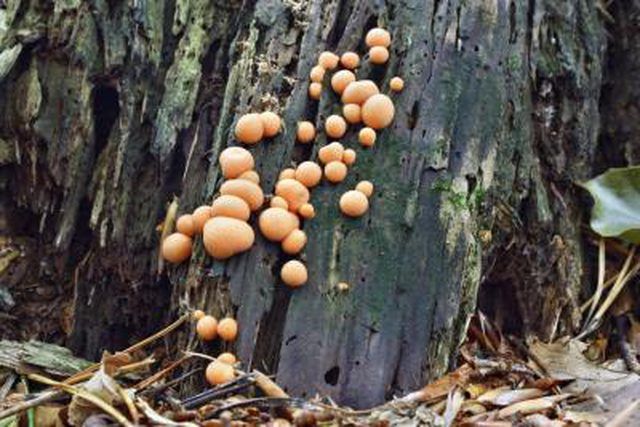Bulbs
Flower Basics
Flower Beds & Specialty Gardens
Flower Garden
Garden Furniture
Garden Gnomes
Garden Seeds
Garden Sheds
Garden Statues
Garden Tools & Supplies
Gardening Basics
Green & Organic
Groundcovers & Vines
Growing Annuals
Growing Basil
Growing Beans
Growing Berries
Growing Blueberries
Growing Cactus
Growing Corn
Growing Cotton
Growing Edibles
Growing Flowers
Growing Garlic
Growing Grapes
Growing Grass
Growing Herbs
Growing Jasmine
Growing Mint
Growing Mushrooms
Orchids
Growing Peanuts
Growing Perennials
Growing Plants
Growing Rosemary
Growing Roses
Growing Strawberries
Growing Sunflowers
Growing Thyme
Growing Tomatoes
Growing Tulips
Growing Vegetables
Herb Basics
Herb Garden
Indoor Growing
Landscaping Basics
Landscaping Patios
Landscaping Plants
Landscaping Shrubs
Landscaping Trees
Landscaping Walks & Pathways
Lawn Basics
Lawn Maintenance
Lawn Mowers
Lawn Ornaments
Lawn Planting
Lawn Tools
Outdoor Growing
Overall Landscape Planning
Pests, Weeds & Problems
Plant Basics
Rock Garden
Rose Garden
Shrubs
Soil
Specialty Gardens
Trees
Vegetable Garden
Yard Maintenance
Tree Fungus and Moss
Tree Fungus and Moss. Trees can be host to a number of different life forms, since the branches and trunk provide a sheltered habitat, and the tree itself can be tapped for nutrients by fungal diseases. True mosses are moisture-loving, nonflowering plants called bryophytes. Spanish moss (Tillandsia usneoides), a flowering plant related to...
Trees can be host to a number of different life forms, since the branches and trunk provide a sheltered habitat, and the tree itself can be tapped for nutrients by fungal diseases. True mosses are moisture-loving, nonflowering plants called bryophytes. Spanish moss (Tillandsia usneoides), a flowering plant related to pineapple, grows in tree branches. Fungi in trees are disease organisms, but their presence isn't always visible. They announce themselves by producing brackets on tree trunks or branches, or mushrooms at the tree's base.
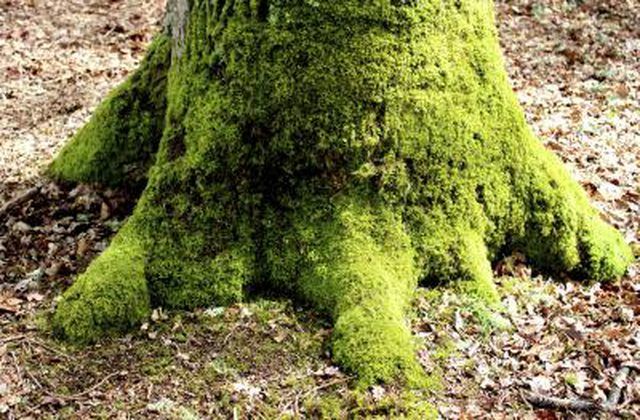
Low-growing, velvety green moss grows on moist tree trunks. It doesn't always grow on the north side of a tree -- a common misconception -- but on any side that remains moist long enough. It doesn't hurt the tree. Mosses belong to a group of plants called bryophytes. They lack true stems, roots, flowers or fruit, reproducing via spores, which are produced from a wiry-stemmed structure that is taller than the leaves. Moisture is necessary for growth and reproduction. Mosses dry up and become dormant in hot, dry weather. In very moist climates, such as the Pacific Northwest, trees can have a shaggy coat of moss high into the canopy. Removal generally isn't needed. If you want to remove moss, scour branches with a power washer while the tree is dormant. However, the forceful water may harm dormant tree buds, so confine the water jet to the trunk and thicker branches without buds.
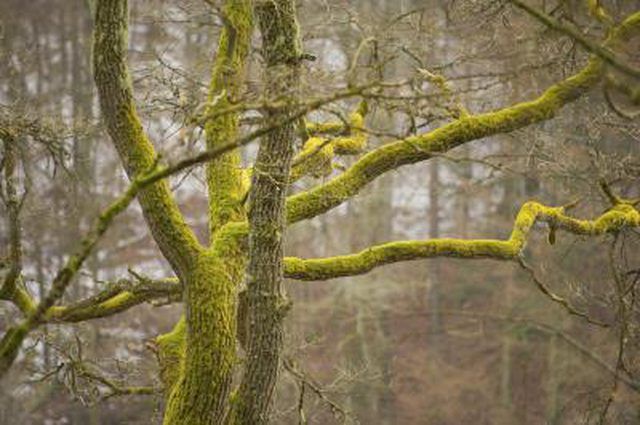
A couple of other low-growing nonblooming plants often grow along with mosses. To the casual observer, they all blend together. Lichens, a combination of an alga and a fungus, usually form crusty-looking growths that have colors other than green, with more common colors being yellow, gray, orange and dark brown. On trees, lichens usually occur in sunnier places rather than in shady spots. They don't directly harm the tree, and you might consider slow-growing lichens as adding character. A heavy lichen growth can indicate that the tree canopy is getting thinner and letting in more light, which may indicate an underlying tree health problem. Algae occur as thin green deposits, usually on the tree's shadiest side. They need moisture to survive, and they don't harm the tree.
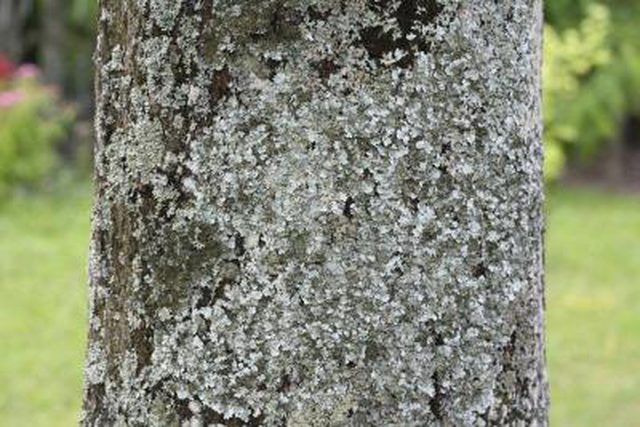
Travel to the southeastern United States and you'll see gray Spanish moss festooned in tree branches, growing in USDA zones 8 through 11. It's not a parasite: This rootless plant can make food for itself from rain, sunlight and air. Spanish moss uses tree branches for support and doesn't harm them directly; indirectly, a tree branch can break if it's weighed down by a heavy accumulation of the moss. You can control Spanish moss by physically removing it from the tree with a long hooked pole. For very tall trees, consult an arborist.
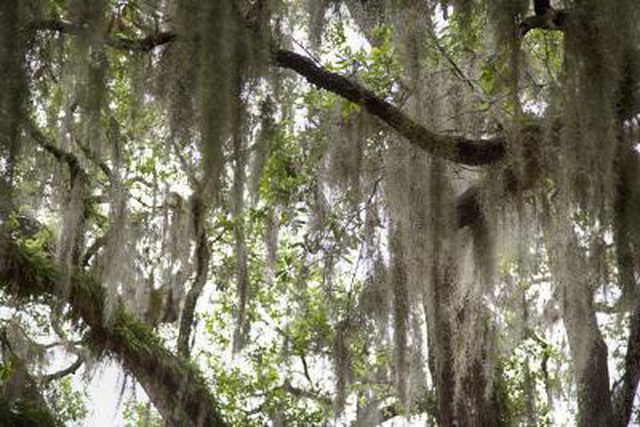
Fungi invade a tree's wood, leaves or roots. There are many types. Often a fungus enters through a wound. Other fungi can enter a tree by breaking down the tree's tissues. Root fungi can kill a tree in a fairly short amount of time. Other fungi send their threadlike hyphae into the wood of the trunk and branches, weakening it as they feed by secreting enzymes that break down the tissue. By the time you see their fruiting bodies of brackets or mushrooms, the tree has usually been infected for some time. There's little that can be done for an infected tree except to keep it from becoming a hazard. Remove, brace or cable trees showing structural weakness promptly. Be alert for signs of poor health, and remove any branches that develop fruiting bodies as soon as you notice them. For prevention of fungal diseases, keep trees healthy and well-pruned, and try to prevent injuries to them.
